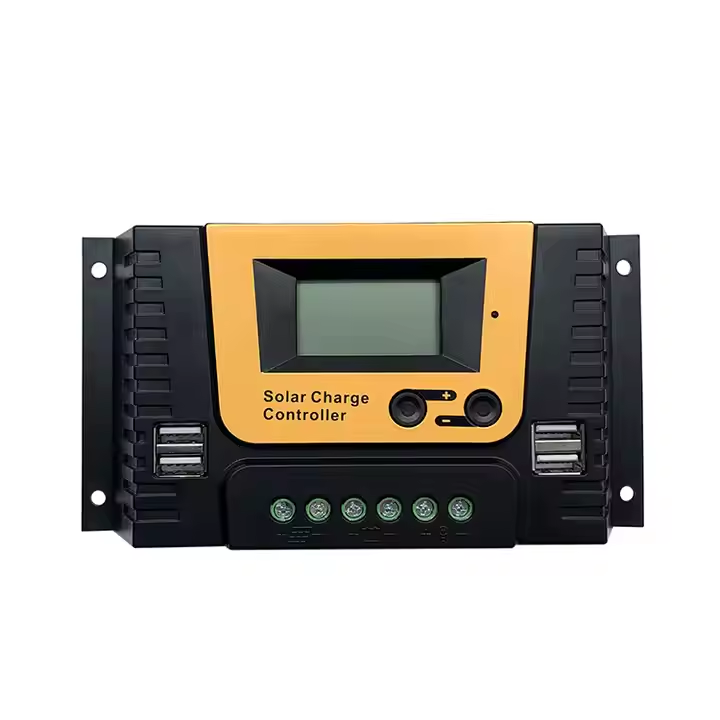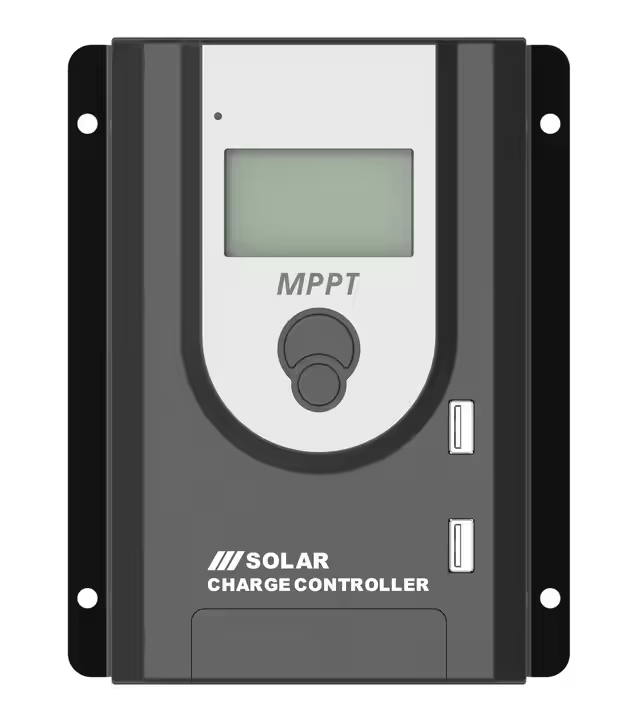I. Introduction
Solar charge controllers are an essential component of any solar power system. They regulate the energy produced by solar panels and ensure that the battery bank operates safely and efficiently. In a solar home use system, selecting the right charge controller is vital for optimizing system performance, protecting your batteries from overcharge or deep discharge, and ensuring long-term reliability. In this guide, we will explain what solar charge controllers are, the key factors to consider when choosing one, and best practices for installation and maintenance.
II. Understanding Solar Charge Controllers
A. Definition
A solar charge controller is a device that manages the flow of electricity from your solar panels to your battery bank. It ensures that the batteries are charged efficiently during the day and prevents reverse current flow at night, protecting your stored energy.
B. Key Functions
Preventing Reverse Current Flow:
At night or during low-sunlight conditions, solar panels can act as a load and draw energy from the batteries. The charge controller disconnects the panels to prevent this reverse current flow.Regulating Voltage and Current:
The controller manages the charging process by ensuring that the voltage and current remain within safe limits for your battery, which is crucial for efficient and safe operation.Protecting the Battery:
By monitoring battery voltage levels, the charge controller disconnects the load when battery voltage drops below a safe threshold, thereby preventing deep discharge and extending battery life.
C. Types of Solar Charge Controllers
PWM (Pulse Width Modulation) Controllers:
PWM controllers are cost-effective and suitable for smaller solar systems with simpler configurations. They work by gradually reducing the current as the battery approaches full charge.
2.MPPT (Maximum Power Point Tracking) Controllers:
MPPT controllers are more advanced and efficient. They continuously track the maximum power point of your solar panels, adjusting the voltage to maximize energy harvest, making them ideal for larger or more complex systems.
III. Factors to Consider When Choosing a Solar Charge Controller
A. System Compatibility and Specifications
Voltage Compatibility:
Ensure that the controller’s voltage rating matches your solar panels and battery bank’s specifications to guarantee proper operation.Current Rating:
The controller should be capable of handling the maximum current produced by your solar panels without overheating.
B. Efficiency and Performance
PWM vs. MPPT:
Although PWM controllers are more affordable, MPPT controllers offer superior efficiency and performance in environments with variable sunlight, making them preferable for larger systems.Tracking Accuracy:
For MPPT controllers, the accuracy in tracking the maximum power point is crucial for optimizing energy production.
C. Features and Functionalities
Display and Monitoring:
A built-in display or remote monitoring capability allows you to track system performance in real time.Protective Features:
Look for controllers that offer comprehensive protection features, such as overcharge, over-discharge, and short-circuit protection.Programmability:
Controllers with adjustable settings (for example, Low Voltage Disconnect (LVD) settings) can be fine-tuned to match the specific requirements of your battery and load conditions.
D. Durability and Environmental Considerations
Operating Temperature Range:
Choose a controller designed to operate efficiently in your local environmental conditions, particularly if you live in an area with extreme temperatures.Ingress Protection (IP) Rating:
A controller with a high IP rating is better protected against dust and moisture, ensuring longevity in harsh conditions.
E. Brand Reputation and Support
Warranty and After-Sales Support:
Select products from reputable brands that provide comprehensive warranty coverage and reliable customer support.User Reviews and Industry Certifications:
Industry certifications and positive user reviews are valuable indicators of a controller’s reliability and performance.
IV. Installation and Integration Considerations
A. Proper Wiring and Connections
Ensure all wiring between the solar panels, charge controller, and battery bank is done with correct polarity and secure connectors. Incorrect wiring can lead to reduced performance or even system damage.
B. System Design Alignment
Choose a charge controller that matches the capacity of your solar array and battery bank. Using a controller that is under-sized or over-loaded can result in inefficiencies or failures.
C. Maintenance and Troubleshooting
Routine Checks: Regularly inspect wiring connections, measure battery voltage, and check the system’s overall performance.
Troubleshooting: If you experience premature load disconnection or other issues, review settings such as Low Voltage Disconnect (LVD) and check for any wiring defects or environmental factors affecting performance.
V. Case Studies and Examples
Example 1:
A residential installation in a high-temperature region showed that using an MPPT controller increased energy harvest by approximately 20% compared to a PWM setup. This improvement not only extended the battery’s lifespan but also enhanced overall system reliability.
Example 2:
In a community solar project, proper adjustment of the Low Voltage Disconnect setting prevented deep battery discharge during extended cloudy periods, leading to a more stable and efficient energy supply during peak demand hours.
VI. Conclusion
Choosing the right solar charge controller is crucial for ensuring an efficient and reliable solar home system. By considering factors such as system compatibility, efficiency, features, environmental resilience, and brand reliability, you can optimize your solar energy setup for long-term performance and cost savings. A well-designed and properly maintained system will not only protect your investment but also maximize energy output, offering a sustainable solution for your home’s power needs.
For industry professionals looking to enhance their solar installations, a careful and informed selection process is key to achieving success.
VII. Frequently Asked Questions (FAQs)
What are the main differences between PWM and MPPT controllers?
MPPT controllers typically offer higher efficiency and better performance in varying sunlight conditions, whereas PWM controllers are more cost-effective and suitable for smaller systems.How do I properly size a solar charge controller for my system?
Ensure that the controller’s voltage and current ratings align with those of your solar panels and battery bank. Refer to manufacturer guidelines for precise calculations.What maintenance practices ensure long-term reliability?
Regular inspections of wiring, periodic voltage checks, and verifying that settings such as LVD are properly calibrated will help maintain optimal system performance.How do environmental conditions affect controller performance?
Extreme temperatures and humidity can impact both battery performance and controller efficiency. Choose a controller with a suitable operating temperature range and high IP rating.




